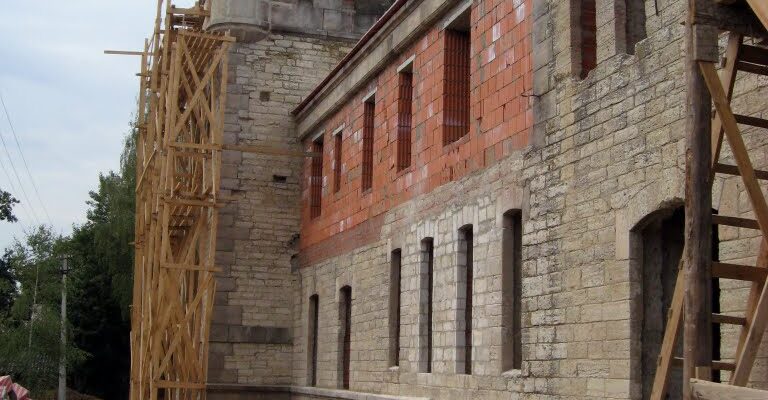Borki Manor (Borki Castle)
Borki Manor is a picturesque neo-Gothic castle in the village of Borki, Lipetsk region. At the beginning of the last century, this estate belonged to the cousin of Russian Tsar Nicholas II – Grand Duke Andrei Vladimirovich Romanov. The elegant stone castle was built in 1902-1903 according to the project prepared by the architect from St. Petersburg Alexander Ivanovich von Gogen. In addition to the main building, the Borki estate included a dining room, buildings for servants, as well as a courtyard with a gate and stables. The medieval castle-like buildings were surrounded by a picturesque English park with ponds.
.
In 1983, the estate received the status of a historical and cultural monument of regional significance and was included in the protective register. Nowadays, the Borkovsky castle is privately owned. While it is being restored, and in the future the old building is planned to be used as a hotel and entertainment center.
The Borki estate attracts quite a few tourists. To see the rural estate, which was owned by one of the members of the royal family, come travelers from Russia and abroad. Some tourists are driven by simple curiosity, while others want to learn more about the features of the architectural style in which the stone castle was built.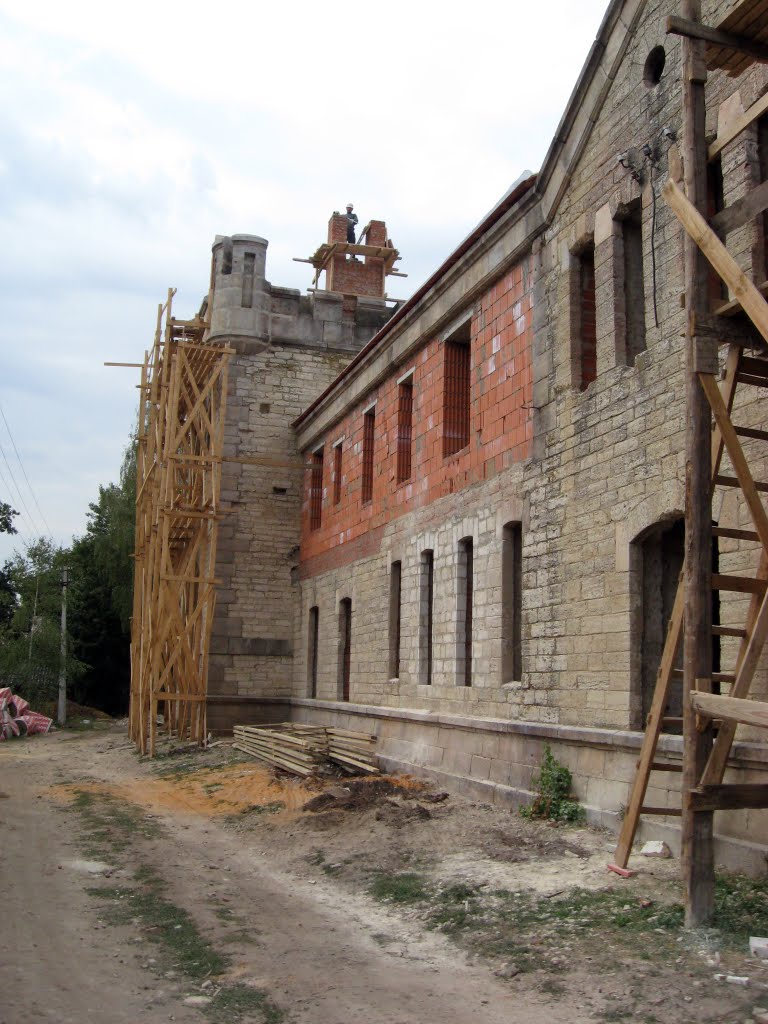
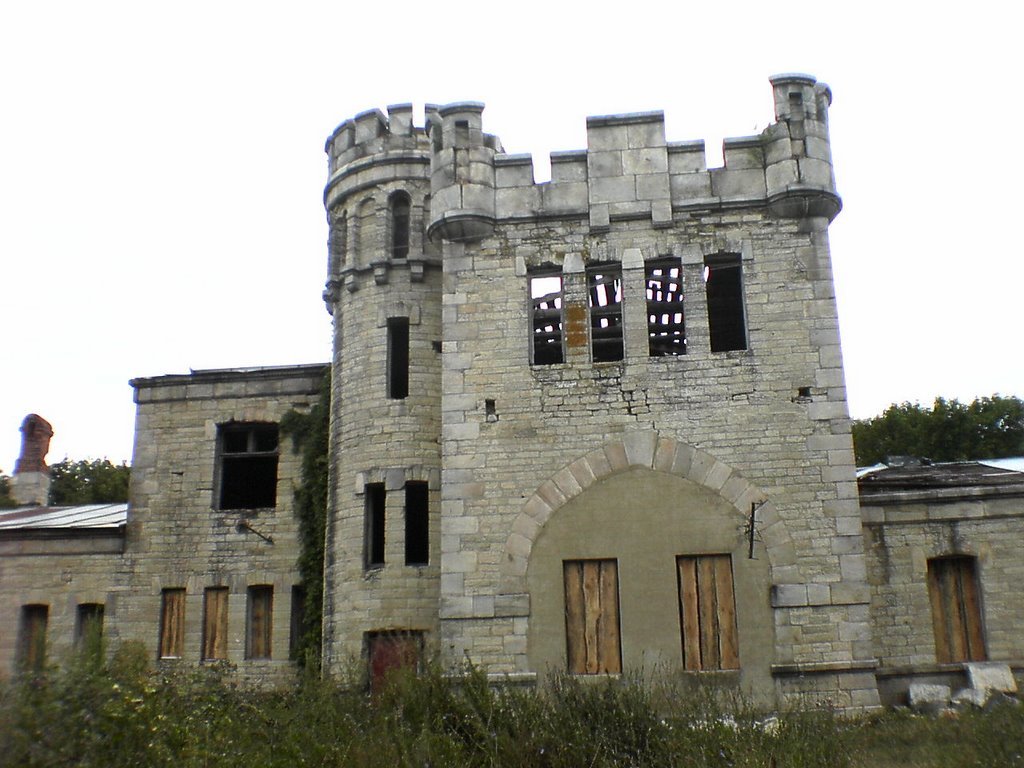
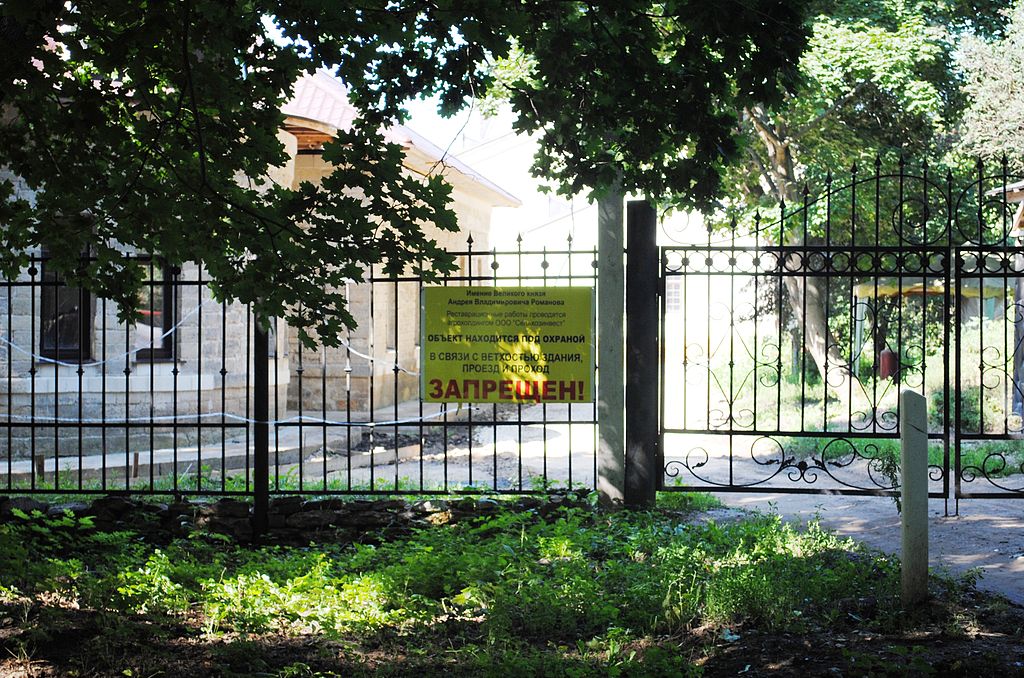
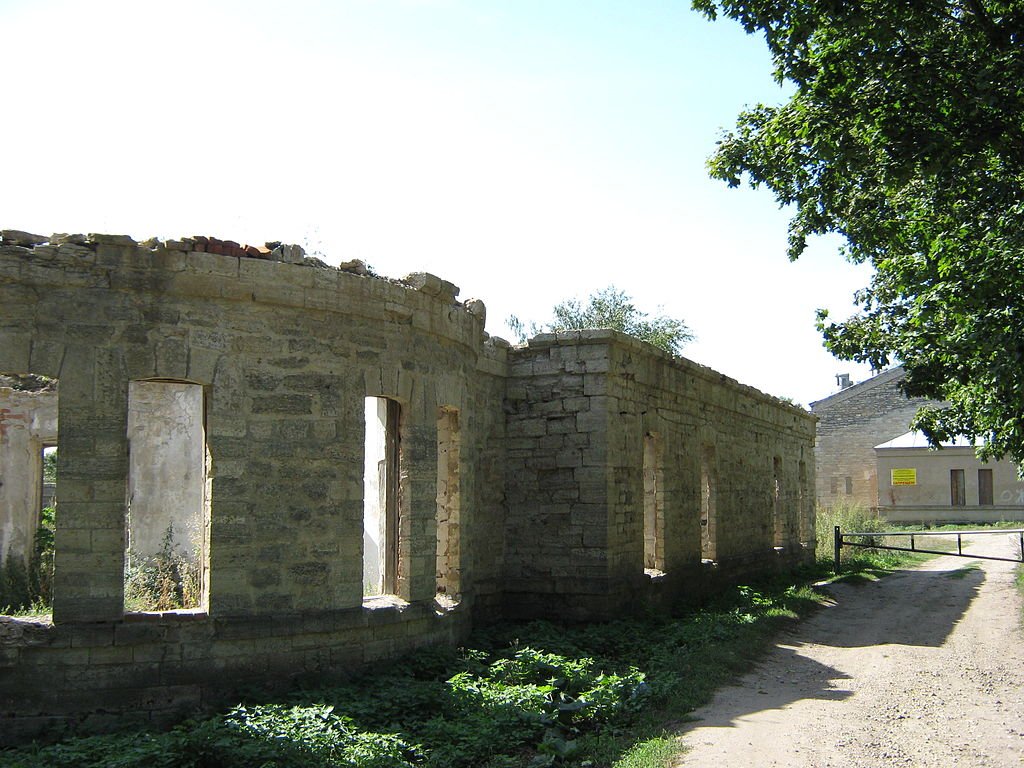
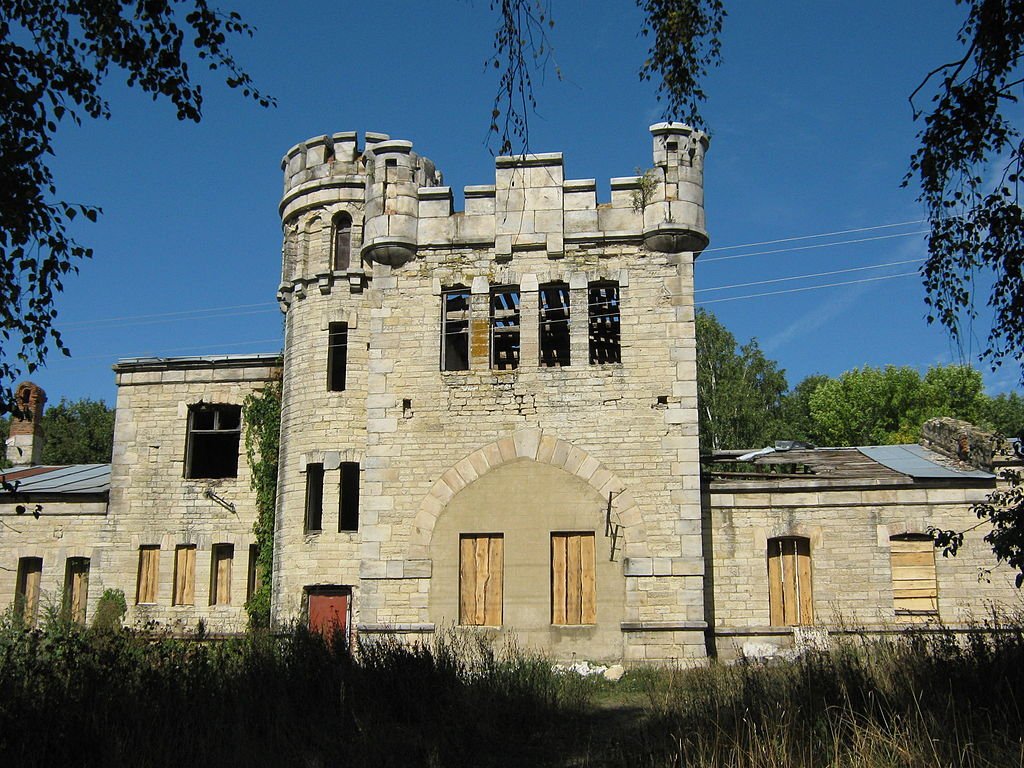
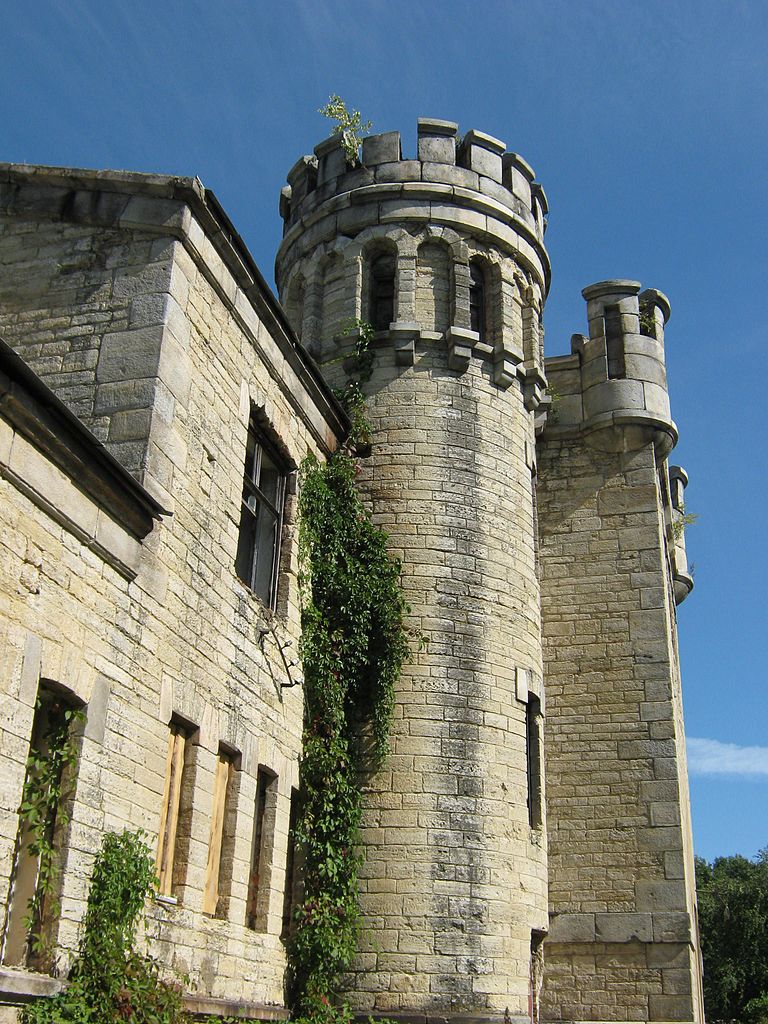
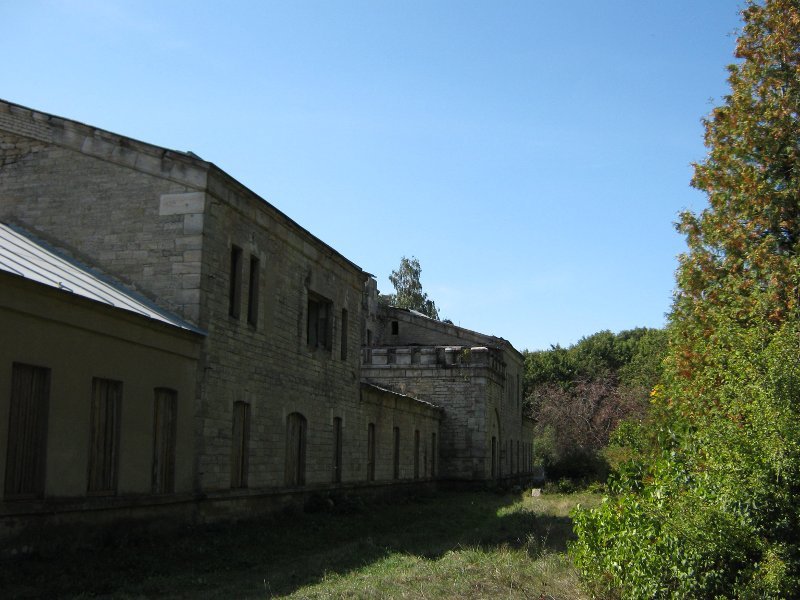
Video: Borki Manor
ContentsHistory of Borki Manor
Until the beginning of the last century, the Borki estate was owned by the nobles Ofrosimovs. In 1901, the surrounding land was bought by a cousin of the Russian Tsar. The erection of a new estate began in 1902 and lasted for 10 years.
.
The owner did not live here permanently, but visited Borki and the nearby Zakharovka estate several times. The castle did not really attract A. V. Romanov, so before the outbreak of the First World War he decided to sell the estate. In 1915 the new owner of the Borki estate was the landowner Sheremetyev. He set up a horse breeding factory on the estate and was actively engaged in agriculture here.
.
After the revolutionary events of 1917, the private estate was nationalized. Under Soviet rule, the Borki estate became a Children’s Home, where two hundred refugees were accommodated. Later, the castle housed craft workshops, and a labor school for peasant youth was opened.
.
In 1941 there was a fire in the manor buildings. When Borki was being rebuilt, the builders reconstructed the roof of the building, and an archway was made through the strong stone walls. At the same time, the old English park was completely cut down. After the renovation in the 1950s, the castle housed the classrooms of the Borkov secondary school. They were here until 1999, and then the school moved to another building.
For a long time the old palace stood abandoned and was not needed by anyone. In 2007, it was sold to the general director of a large agricultural holding “Selkhozinvest” SA Gribanov. According to the contract for several years the Borki estate should be restored in compliance with the original construction technologies and materials.
.Legend
The unusual architecture for the countryside and the mysterious silhouettes of the castle towers have given rise to many legends. The most colorful one tells about an unusual composition of table and chair-like boulders, which can be seen behind the main building of the Borki manor.
>
Among locals, this place is known as the “devil’s canteen”. About the “table top”, “chairs”, “sofas” and other gray boulders lying in the tract, different legends are composed. According to one of them, this “furniture” scattered here angry devil.
.
The history of the village of Borki also goes back in time. The settlement was founded near an ancient ford on the river Olym, where they accumulated the tribute collected from the Russian principalities, which was then transported to the Golden Horde.
.
Features of the architecture
Borki Manor is the only castle built in the traditions of English Neo-Gothic architecture in the Lipetsk region. It is erected from bute and gray mortared sandstone. Strong and beautiful materials helped to preserve the appearance of the buildings, so, even after more than a hundred years, the castle looks very good.
.The manor house is similar to European medieval prototypes, although considerably inferior in size. The stone building is elongated in length and decorated with tall crenellated towers with loopholes. The entrance gate that used to lead to the courtyard was laid many years ago, but traces of it are clearly visible on the facade of the building.
.The central building faces towards a ravine where a fruit orchard grows. The castle is surrounded by an English park, the grounds of which overlook the steep right bank of the Olym.
How to get there
The Borki estate is 11 km away from the federal highway M-4 “Don”. It is 110 km from Lipetsk and 80 km from Elets. Tourists who get here by car should turn off the M-4 highway to Trebuny and drive through Gudovka, Anikeevka, Krasnaya Polyana and Vtorie Trebuny. In the village of Trebuny you should turn to Borki. The farmstead is located to the west of the main development of the village.
.